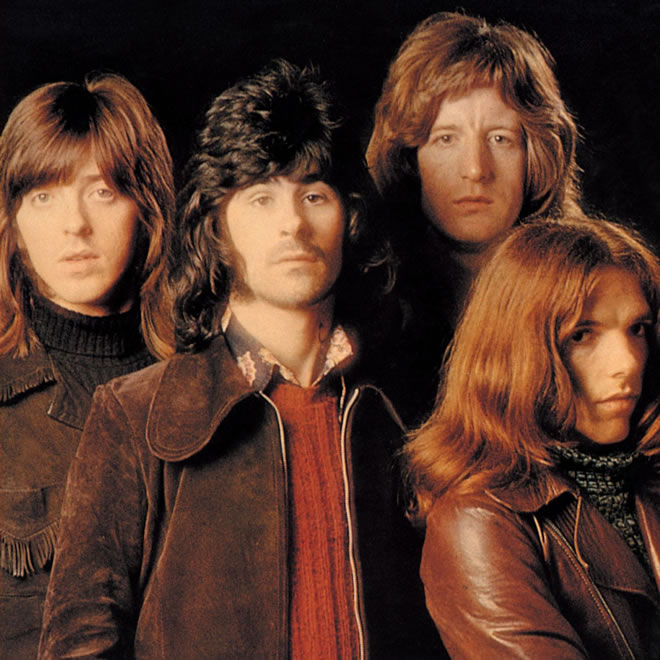Badfinger: Overview and Impact as Music Artists
Badfinger was a British rock band formed in Swansea, Wales, in 1961 under the name The Iveys. Known for their melodic pop-rock sound and connection to The Beatles, Badfinger became one of the pioneers of the power-pop genre. With hits like “Come and Get It,” “No Matter What,” and “Day After Day,” they achieved significant success in the early 1970s. However, their career was marred by financial mismanagement and personal tragedies, leading to the untimely deaths of key members Pete Ham and Tom Evans. Despite these challenges, Badfinger’s influence on rock music remains profound, with their harmonies, songwriting, and sound inspiring countless artists.
Key Phases in Badfinger’s Career
- Formation as The Iveys and Early Years (1961-1969): The band was initially formed as The Iveys, playing in clubs around Swansea. They were discovered by The Beatles’ Apple Corps in 1968, becoming the first act signed to Apple Records. Their debut album, Maybe Tomorrow (1969), received limited commercial success but showcased their potential as melodic songwriters.
- Breakthrough with Magic Christian Music (1970): Renamed Badfinger, the band gained international recognition with Magic Christian Music, which included “Come and Get It,” a Paul McCartney-penned hit featured in the film The Magic Christian. The success of this single introduced them to a global audience.
- Golden Era (1970-1973): Badfinger’s creative peak came with albums like No Dice (1970) and Straight Up (1971). These albums featured iconic songs like “No Matter What,” “Day After Day,” and “Baby Blue.” Their intricate harmonies, catchy melodies, and heartfelt lyrics showcased their artistry and established them as a force in the emerging power-pop genre.
- Challenges and Decline (1973-1975): After leaving Apple Records due to financial and managerial issues, Badfinger signed with Warner Bros. Records. Albums like Badfinger (1974) and Wish You Were Here (1974) received critical acclaim but were overshadowed by legal disputes. These issues, combined with financial mismanagement, led to growing tensions within the band.
- Tragedy and Legacy (1975-Present): Pete Ham’s suicide in 1975, followed by Tom Evans’ in 1983, marked a tragic end for the band. However, their music gained renewed attention through covers and media usage. Songs like “Baby Blue” experienced a resurgence after being featured in the finale of Breaking Bad (2013), introducing Badfinger to a new generation of fans.
Musical Style and Themes
Badfinger’s music is characterized by its rich vocal harmonies, melodic hooks, and emotional lyrics. Often compared to The Beatles, their sound blends pop, rock, and folk influences. Themes of love, heartbreak, and hope are prevalent in their songs, with tracks like “Without You” (later made famous by Harry Nilsson) becoming enduring classics.
Legacy and Influence
- Pioneers of Power Pop: Badfinger’s fusion of rock and pop set the template for the power-pop genre, influencing artists like Big Star, Cheap Trick, and The Raspberries.
- Timeless Songwriting: Songs like “Without You” and “Day After Day” remain iconic for their emotional resonance and enduring appeal. “Without You” has been covered by numerous artists, including Mariah Carey, solidifying its place as a pop standard.
- Connection to The Beatles: Their association with Apple Records and collaborations with members of The Beatles, including Paul McCartney and George Harrison, brought them critical attention and reinforced their musical credibility.
- Cultural Resurgence: The use of “Baby Blue” in Breaking Bad showcased the timeless quality of Badfinger’s music, introducing them to younger audiences and reigniting interest in their catalog.
- Inspiration for Future Generations: Despite their tragic story, Badfinger’s influence endures, with contemporary artists citing their music as a touchstone for melodic craftsmanship and emotional depth.
Conclusion
Badfinger’s legacy is one of immense talent, groundbreaking influence, and tragic loss. Their ability to create timeless songs with universal appeal has earned them a revered place in rock history. While their career was cut short, the band’s contributions to the power-pop genre and their lasting influence on music ensure their memory continues to resonate with fans and artists alike.
YouTube Topic Channel:
https://www.youtube.com/channel/UCyJzUJ95hXeBVfO8zOA0GZQ
References:
- Matovina, D. (2000). Without You: The Tragic Story of Badfinger. Frances Glover Books.
- “Badfinger Biography.” AllMusic, Stephen Thomas Erlewine.
- “Badfinger’s Baby Blue and the Breaking Bad Effect.” Rolling Stone, 2013.
- “The Power Pop Legacy of Badfinger.” Classic Rock Magazine, 2018.
- “Badfinger: The Beatles’ Protégés Who Defined Power Pop.” The Guardian, 2019.


Leave a Reply